 Future Unicorns
Future Unicorns

Sandbox Network is a multi-channel network that manages over 450 digital creator teams and their content. Despite being late to the game of MCNs, the company has sustained a double-digit revenue growth since its inception in June 2015, and now has a total of 200 million subscribers and a 72 billion view count across its content creators. Rejecting the existing MCN business model of offering simple back-room services for a share of the creator’s income, Sandbox is a ‘comprehensive service provider,’ that offers its creatives personalized assistance in matters ranging from marketing to content creation. A share of Sandbox’s Series D funding of 50 billion won comes from Nexon, Korea’s leading game developer.
- Story
- Data
Sandbox: A Digital Revolution of Creator Management
Catering to the unique needs of Korea’s digital content creators.
The story of Sandbox Network Inc. begins with the brand’s co-founder and the chief evangelist Na Hee-sun, also known as “Dotty” to his YouTube audience. In 2014, Dotty rose to fame as a YouTube star, earning the moniker “President of Elementary School Students.” His YouTube channel content included “Let’s Play” videos of Minecraft, which attracted a huge following and pushed the subscriber count to grow exponentially, reaching an accumulated view count of 100 million by January 2015.
Dotty’s collaborators and fellow content creators, Prettyherb , TaeKyung, and Cocoa, also enjoyed great popularity during this time. But despite his tremendous success, Dotty felt anxious about the sustainability of his fame and was unsure if his income fairly matched his fame.
It was with these concerns that Dotty approached Lee Pil-sung, an old friend from his alma mater, Yonsei University. At the time, Lee was working at Google Korea as a Strategic Partnerships Manager, connecting digital media with advertisers. Lee was responsible for assessing the value of media models ranging from small websites to top media companies. Through his conversation with Dotty, Lee came to appreciate the value of YouTubers as original digital content creators in their own rights.
“Reading the texts and seeing the gifts elementary school students sent to Dotty, I realized that the popularity of digital creators was much deeper and more wide-reaching than I had ever imagined. Indeed, I came to consider YouTubers’ contents as powerful Intellectual Property (IP),” said Lee.
But the issue was that advertisers devalued YouTubers simply because they operated on a single-person broadcasting system. At the time, there were already plenty of channels with 500,000 subscribers logging over 3 million monthly views and with this level of following, a content creator working in TV or publication could have easily earned 10 billion won to 20 billion won per annum. This was far from the reality of digital content creators who were earning much less. Seeing this, Lee envisioned a business model that would coordinate a fair revenue for the YouTubers’ earned media value (EMV).
“What’s more, 2015 was when the mobile advertising market began to take off and I believed we could create an excellent online advertising network if we managed to connect digital creators with the mobile world,” Lee said.
Hence, Dotty and Lee co-founded the multichannel network (MCN) Sandbox Network in June 2015.
Contents
-
[Revenue Model] Diversifying into Advertising, Commerce, and IP
Sandbox Network’s revenue is growing at a breakneck speed. The company’s revenue jumped from 28.2 billion won in 2018 to around 90 billion won in 2020. This year the company is expected to report 125 billion won in sales.
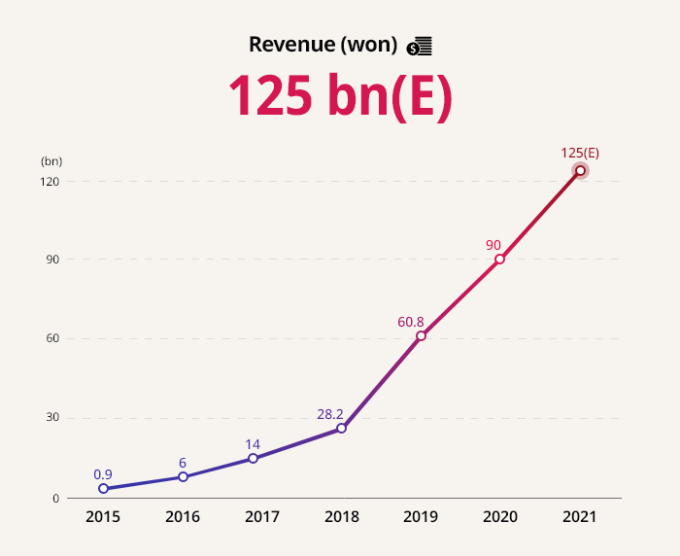
According to CEO Lee, YouTube accounts for 60% of the company’s revenue. The US-based streaming platform distributes a portion of its advertising revenue to content creators, and Sandbox Network takes a cut from the creators for offering services like producing and planning.
Over the next two to three years, Sandbox Network plans to scale back its YouTube revenue portion to below 50 percent. Instead, the company aims to boost the overall cumulative yield by increasing sales portions of advertising, commerce, and IP business.
“We plan to generate at least 300 billion won in annual revenue by beefing up sales in the advertisement, commerce, and IP business,” Lee said.
CEO Lee says the digital advertising market has just begun to make use of YouTube creators to promote their products. In the past, casting famous celebrities and airing the advertisements via primetime television was enough to make the brand’s message reach the national audience. This is no longer the case.
“In the past, a YouTube video with a million views could not break-even because advertisers still paid less for YouTube ads than they did for TV. However, times are changing. While we still have a long way to go, we are starting to make some profit. The marketing cost difference between televised and digital advertising will continue to narrow according to market logic,” Lee said.
CEO Lee believes that Sandbox Network can resolve the anxiety of advertisers who are unfamiliar with the YouTube world. The company can draw from its pool of over 450 creators to match the advertiser’s needs to create the best possible content marketing solution.
Aside from YouTube, developing and selling diverse content and products based on their clients’ IP is Sandbox’s main revenue model. For example, Dotty, alongside 22 other signed Sandbox Network creators, have published books based on stories from their YouTube channel.
Na Hee-sun, also known as Dotty, has published many books based on YouTube content.
Sandbox organizes offline events including meet and greets and live performances like musicals. Creating merchandise like t-shirts and bags is commonplace. Sandbox Network also assists its creators in licensing, product design, and in collaborating with established brands. Products like ‘Dr.MOJO’ (posture correcting band) and ‘Secretary Yu’ (filming kit) are representative of this effort. The company has launched a Creator Private Brand (CPB) for its creators and even emojis inspired by them.
Sandbox Network's merchandise.
In June 2020, Sandbox Network launched a commerce platform “Much Merch,” a platform that helps creators produce and sell their own merchandise. The platform allows creators to maximize their product revenue beyond their income from YouTube by providing a “one-stop” solution for product design, shipment, and payment services. Anyone can use the platform, even if they are not signed with Sandbox Network.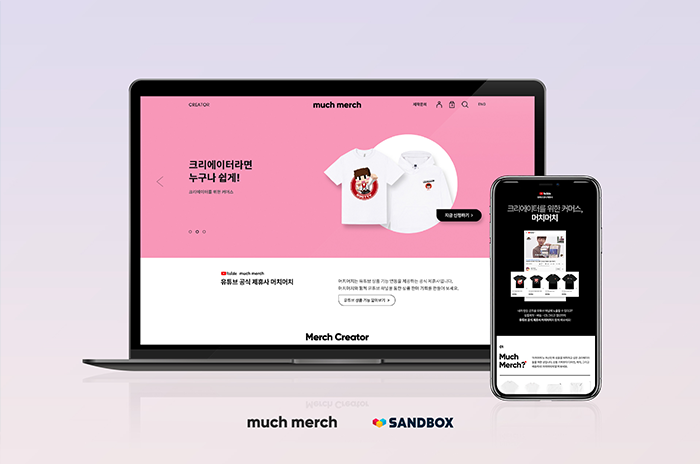
MCN startup ‘Sandbox’ made a ‘Digital Content Intellectual Property (IP) Offline Distribution Network Related Work Partnership’ with BGF retail.
The two companies are joining forces to turn Sandbox and its digital content creators’ IP into products for CU convenience store.They also use their online channel to actively facilitate content collaborations and public service campaigns.
CEO Lee Pil Sung explained ‘we could make great synergy between Sandbox creator’s original digital content and BGF retail’s CU offline network (...) both companies will work hard to be loved by our customers.’ -
[Value Proposition] Of the Creator, By the Creator, For the Creator
Sandbox Network was a latecomer to the game of digital creator management, as there were already industry players who had adopted a similar business model both globally and in Korea. CEO Lee believed it to be essential for Sandbox to build an ecosystem centered around digital creatives to differentiate the company from its competitors.
“Foreign MCNs established before Sandbox Network made profits by offering back-office services and receiving service fees. I found this system to be unsatisfactory since they were making money by offering basic level services that didn’t add value to the creator’s work. I thought it would be much more reasonable for a business to help the creator earn greater income, and share the profit,” Lee said.
CEO Lee defines Sandbox Network as a publisher that invests in and fosters the growth of content IP. In other words, the company plays an active role in helping digital creators use their IPs to produce diverse content and also provides a streamlined distribution system for them to maximize their income.
The company’s revenue comes from taking a percentage cut from the advertising and content sales, alongside additional revenue that arises in this process.
For instance, Dotty was just a gaming YouTuber before Sandbox Network. But he now holds a robust IP portfolio encompassing publication, musicals, and merchandising. Dotty’s content IP came to be on the same level as that of established animation brands like Pororo and Pinkfong.
CEO Lee also characterizes Sandbox Network as a comprehensive service provider for creators. Since content creators are the greatest assets to the company, Lee believes that it is foremost for the company to satisfy the needs of the creators to attract and retain a pool of strong talent.
“While it’s possible to temporarily retain talent through binding contracts that forbid creators from working with other MCNs; I didn’t think that it was an appropriate business strategy in an industry that thrives off the creative freedom of individual content creators,” Lee explained.
Sandbox Network assigns producers to support individual content creators to plan and produce content and also connects them to advertisers. Marketing; publicity and press releases; education; and administrative assistance including handling copyright issues are just a few examples of the holistic service that the company provides.
“Each creator has a unique relationship with the company as they each have different needs. Some creators want Sandbox Network to handle all financial matters so that they can focus their energy on creating content while other content creators want the company to give them a more professional infrastructural support in producing and managing content,” said Lee.
It is with this philosophy that Sandbox Network runs its Creator Experience (CX) team. The CX team analyzes creators’ unique preferences and creative styles and then sorts them into one of five different types of “persona(s)”. By providing a service that caters to a specific persona, the company can increase the creators’ fulfillment and effectively manage their content.
As of March 2021, there are around 450 creator teams at Sandbox Network. The company has seen a significant rise in the number of teams over the past five years -- from 73 teams in 2016 to 340 teams in 2019.
Sandbox Network has also branched out of their initial client base of gaming YouTubers to diverse creative fields including lifestyle, Mukbang (eating broadcast), and entertainment. Even household names like Yoo Byung-Jae have joined the Sandbox family.
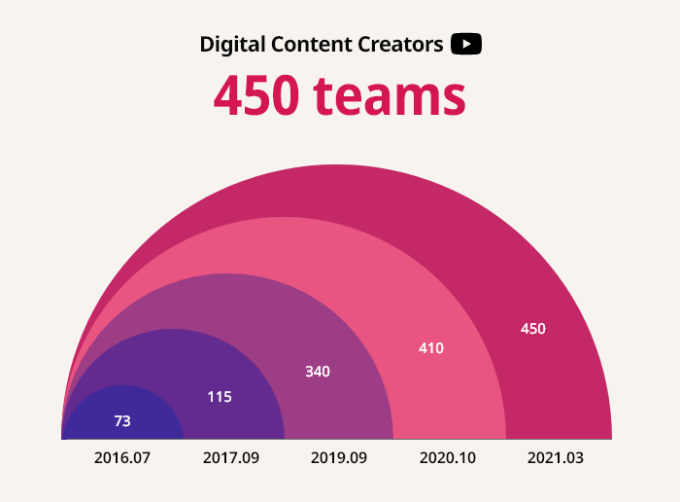
“We owe our success to word-of-mouth marketing as word quickly spread that our company is a business that truly supports creators. As the number of creator teams grew, we achieved economies of scale that enabled us to provide a wide range of services including advertising, consulting, legal advising, and marketing. We couldn’t afford a full legal service team if we only had ten creators,” Lee explained.
Client creators concur that Sandbox Network is not your average management company.
“Many MCNs say they are on the side of the creators, but Sandbox Network is the only company that truly revolves around their creators’ needs,” said YouTube food creator YAMMOO.
According to game content creator Ggambring, Sandbox Network recognized his potential and value when he only had 150 subscribers. Now Ggambring boasts an impressive 1 million subscriber count.
“Sandbox is an MCN of the creator, by the creator, and for the creator,” Ggambring said. -
[Market Penetration Strategy] An Underdog Player’s Vertical Expansion
At the beginning of their startup journey, Sandbox Network focused on gaming channels. Not only was the co-founder Dotty a game creator himself, but CEO Lee also judged that the gaming content industry was more undervalued compared to other fields of digital entertainment like beauty.
“Rather than aiming for unattainable goals from the very start, I wanted to aim for the “low hanging fruit” of digital content. There was a high demand for YouTube content but advertisers had yet to show interest in investing their resources in the video-sharing platform. I wanted to mold our business slowly and steadily since the YouTube market was still premature,” Lee said. Sandbox Network established itself as an MCN specialized in gaming content for the first year and a half before branching out to Mukbang, entertainment, lifestyle, and fashion. During this time, YouTube’s predominantly teenage audience base also evolved to include all other generations of viewers.
Rather than passively waiting for content creators to seek them out, Sandbox Network proactively scouted for talent to add to their pool of creators. Entertainment creator Jang Bbijju is a prime example of this. Jang Bbijju used to dub his voice to pre-existing animations as a hobby before Sandbox Network discovered him, and then encouraged him to pursue being a full-time content creator.
“Can this be a real job?” Jang Bbijju thought to himself at the time. Now he is a YouTube sensation with over 2.8 million subscribers.
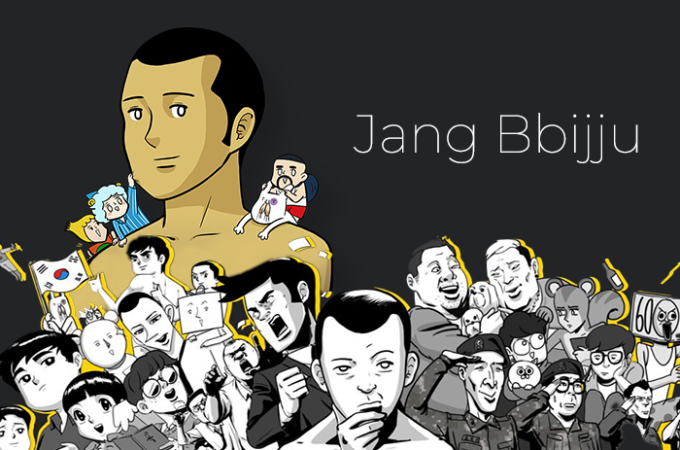
Sandbox Network has made full use of M&A opportunities to diversify its content offering. In December 2018, the company acquired the management rights for an educational MCN, Youniv Inc., and in the following year also purchased shares in a beauty and fashion creator management company, Ice Creative Inc. Lee aims to create M&A synergies by letting each company focus on their own field of specialization.
For example, Chung Jae-won, the founder of Youniv, has a background working in Daechi-dong -- the hub of Korean tutoring companies. He understands the needs of Korean students and the mechanism of the Korean education market better than anyone. Also, Ice Creative CEO Kim Eun-ha is a seasoned creator, nicknamed the “godmother” of beauty and fashion creators in Korea.
“There’s no one better equipped than them to spearhead educational and beauty content in Korea. We collaborate with leaders across various areas to increase our influence in the digital content market,” Lee said.
Sandbox Network even founded SANDBOX Gaming, a professional eSports game team, to tap into the flourishing eSports market. Last year, League of Legends Championship Korea (LCK), the Korean branch of the popular game League of Legends (LOL), selected SANDBOX Gaming as one of the ten officially recognized franchise teams for the game. This seal of approval is the LOL equivalent of being a Major League Baseball team.
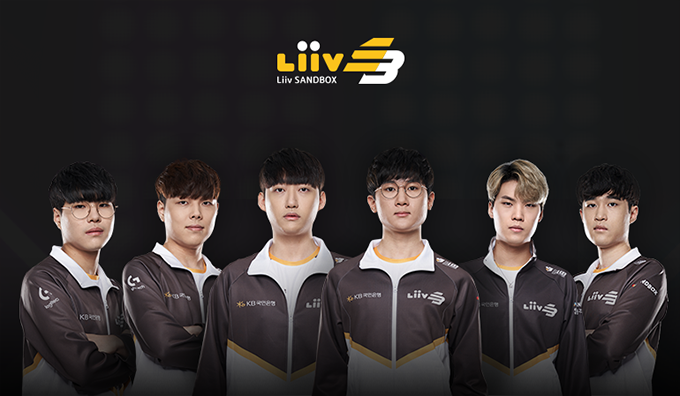
Sandbox Network creators have logged a whopping 200 million in total subscriber count, posting an average monthly view count of 2.6 billion. Since its inception, the company’s accumulated streaming time stands at 48.5 billion hours with 72 billion accumulated view counts.

▲ As of March 2021
-
[Scalability] A Frontier in Korean Digital Content Export
Sandbox Network is gearing up to enter the global market. As Korean media including K Pop, film, and dramas gain huge popularity abroad, the demand for Korean digital content based on YouTube is also on the rise. Some 30% of the company’s digital creatives’ view count on YouTube already come from abroad.
“For example, the rise of K Pop stars like BTS has led to a greater global interest in Korean food. Naturally, “mukbang” contents on YouTube are also gaining more international attention,” said Lee.
The video-sharing platform currently accounts for all of Sandbox Network’s overseas revenue, but the company is aiming to increase the overseas sales portions of advertising and commerce. In three years' time, the company plans to make overseas sales account for 30~40% of the total revenue.
The first target is China. Sandbox has established a branch office in China to support creator activities in the country. Since YouTube is banned in China, the company’s strategy is to infiltrate local platforms.
Sandbox so far has debuted a total of 63 teams of content creators on China’s Bilibili platform, referred to as the "YouTube of China", achieving a total of 4 million subscribers and 170 million views. Some 16 out of the 63 teams, including planD, MilkyBokiTan, The Soy and Raon Lee, have more than 100,000 subscribers.
Also, Sandbox became the first non-Chinese MCN to be ranked on Bilibili’s top 20 list of the most influential MCNs in April 2021. The company said it will also debut its artists on other popular Chinese platforms such as Xigua Video, Douyin and Xiaohongshu.
In July 2021, Sandbox made another major step in China by establishing a local entity named Shanghai Sandbox Media -- about a year after its entry into the Chinese market by debuting five teams of content creators on Bilibili.
Sandbox Network's creator Darlim&Hamabal sings on Bilibili
Sandbox's Chinese entity will offer more business opportunities to its creators based in Korea alongside various services including localization, subtitle creation and editing, digital rights management, viewer analysis, platform analysis as well as partnership-building with the local firms.
Shanghai Sandbox Media is also poised to strengthen influencer marketing and e-commerce initiatives in China. The Chinese company will also employ more specialists for content localization and corporate risk management.
“Chinese businesses are frequently requesting to collaborate with Sandbox Network-based content creators on Chinese live commerce platforms like Tmall and Taobao,” Lee explained.
Localization is the company’s key support strategy for creators who have their eyes set on the global stage. A team of experts helps the creator overcome linguistic and cultural barriers to create content whose title, story, and general ambiance are relatable to the local culture’s taste.
After its venture into China, Sandbox Network’s next stop is its top global consumer -- India. The company also plans to foray into regions that are already familiar with Korean culture, such as Southeast Asia. -
[Funding] Aims to get listed between 2023-2024
In 2015, Sandbox Network received 1 billion won in seed funding from a venture capital firm Eastgate Partners. The following year, it also secured 4 billion won in Series A funding from Company K Partners and K-run Ventures.
In 2018, Korean game developer Neptune Co. invested 10 billion won in a Series B funding, and in 2019, Sandbox Network attracted a total of 25 billion won in a Series C funding from TBT, CrescoLake Partners, DS Asset, and NVC Partners.
In the fourth quarter of 2020, Sandbox Network raised 45 billion won in Series D funding from investors including gaming company Nexon Korea, KDB Bank, STIC Ventures, Q Capital Partners, JB Asset Management, IBK, Samsung Venture Investment, and BSK Investment. Sandbox Network logged 85 billion won in cumulative investments through the Series D funding round.
The company decided to use proceeds from the Series D funding to recruit skilled creators and to build an original content production team.
A prime example of this is their hiring of Kim Hak-joon as the company’s new Chief Content Officer (CCO) in February 2021. Kim is responsible for producing popular YouTube hits such as CJ E&M’s “What’s up Man” and “Workman”.
Sandbox Network also used the capital to advance their business model and foray into the global market.
“Sandbox Network’s sharp revenue growth, improved profitability, and having the most advanced business model among MCN businesses were all factors that made it stand out from the competition,” said Lee Hyun-suk, a principal at STIC Ventures.
It is also notable that Nexon Korea, a leading Korean game developer, participated in the Series D funding round, fueling expectations for potential synergy between the two firms.
“We will collaborate to offer a “viewing game” experience that evolves from the existing “experiential game” scene,” said CEO Lee. “We plan to experiment with various contents to help Nexon become a holistic entertainment company,” Lee added.
Meanwhile, Sandbox Network is eyeing to make a trading debut in the long-term. “Our goal is to be ready for an initial public offering by 2023~2024,” said Lee.
By Hanjong Choi and Min-Ki Koo; edited by Danbee Lee and Elaine Jiwon Kim (dblee@hankyung.com)

